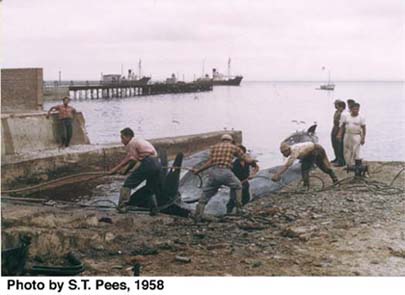 |
||||||
Whaling Control
International Whaling Conventions (IWC) and their precursors have met since the 1930's with the aim of designating whale sanctuaries, putting some species under total protection and some under partial protection. Rules of size, gender etc. were specified in due course. Quotas (called units) were established. These rules were more or less observed, but strictly so when official observers sailed with the whaling ship. The Convention established Scientific Committees to provide data on whales.
Before the enforcement of IWC rules, factory ships were roaming the oceans and harvesting whales at a considerable rate. Conservation groups decried this practice. Maybe a few ships still ply this trade, but the whaling industry is now greatly curtailed.
Many countries are now signatories to the Washington Convention (a significant meeting of the IWC). The late 1970's and 80's saw the closing of many shore stations and reduction of ships. The market for whale oil has nearly disappeared. Most compounds which had used it have now been formulated with refined petroleum products or other chemicals.
 |
Cia Ballenera del Norte shore station at the inlet of Tierra Colorada near Paita, Peru. Whales are being attached to cables which draw them up the ramp to the "plataforma del sacrificio". Catcher boats of 320 tons each are anchored near the wharf. When the whales are cut up on the deck, blood courses down the ramp and discolors the sea. Photo by S.T. Pees, 1958. |
| © 2004, Samuel T. Pees all rights reserved |
|